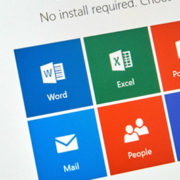Why The Death Star Needs IT Support Services
The Death Star was the greatest feat of engineering the galaxy had ever known. The nearly moon-sized battle station could travel at light speed, fend off enemy fleets on its own, and reduce entire planets to dust and echoes. The Empire’s pride and joy loom large in popular culture and epitomizes destruction, but for all of its terrifying power, the Death Star had one fatal flaw: it had awful IT support services for a product of such incredible engineering.
Spoiler alert: in part thanks to those awful IT services, the Death Star got blown up. If we were the Empire, here are the flaws we’d have spotted almost immediately:
The Death Star’s terrible security is a result of incompetent IT support
A farmer, a smuggler, an old man, a Wookiee, and a princess managed to elude the crew of the shiniest new superweapon in space thanks to the Death Star’s terrible IT support services. As the heroes wove through the battle station’s corridors during Star Wars’ second act, red flags started popping up all over the place (in our minds, but certainly not on any security terminals on the bridge). With proper networking, every Stormtrooper on the station would have been aware of the threat they were facing the moment shots were fired.
Not a single door on board the Death Star was protected by a keypad or a fingerprint scanner, which seem like they’d be common security considerations in such a facility. Not even the high priority prison cells needed a passcode to open. It’s no wonder Princess Leia nearly didn’t believe that she was being rescued.
Let’s not even talk about the fact that the Death Star crew didn’t even notice when old Ben Kenobi shut off the tractor beam that was preventing the Millennium Falcon’s escape. Any technician worth his or her weight in Kessel spices would have worked in some kind of safeguard to alert command if one of the station’s major tools suddenly went offline.
The Death Star as a metaphor: a planet-exploding IT kerfuffle
Even when we zoom out and look at the Death Star as one giant network instead of examining its individual systems, the superweapon was still an IT nightmare. The people in charge of the station clearly had no real grasp on the network architecture. If they had, there would have been a pack of very angry Stormtroopers waiting outside the trash compactor, and a glorified USB port in the hangar wouldn’t have been able to control that same trash compactor from the other side of the station.
To compound the problem, no one seemed to consider that the Millennium Falcon may have had something to do with the sudden sequence of disastrous events aboard the Death Star. A good commander would have jettisoned the ship. After all, if a CD puts a virus on your computer, it at least seems prudent to eject the CD.
All of this ignores perhaps the greatest and most known of the Death Star’s flaws: despite the greatest network of defenses ever constructed, all it took was some careful analysis and a single torpedo to blow the whole thing up. To make things worse, (minor Rogue One spoilers follow) the plans for the station were stored in perhaps the most obvious possible place in the Imperial archives. That’s like putting your username and password in a locked box and leaving it on the street somewhere in hopes that no one decides to break it open and take a look inside.
Simply put, consulting an IT support provider like KME Systems would have prevented the events of A New Hope from happening. Yavin IV would have been destroyed, Luke Skywalker would never have used the Force, and Empire Strikes Back would never have been made. The Empire’s reign of terror would have continued.
We’re really glad the Empire didn’t give us a call. If your business is worried about its technological vulnerabilities or areas for potential improvement, however, we’d love to get in touch and provide all the IT services you need to ward off the Dark Side.













Leave a Reply
Want to join the discussion?Feel free to contribute!